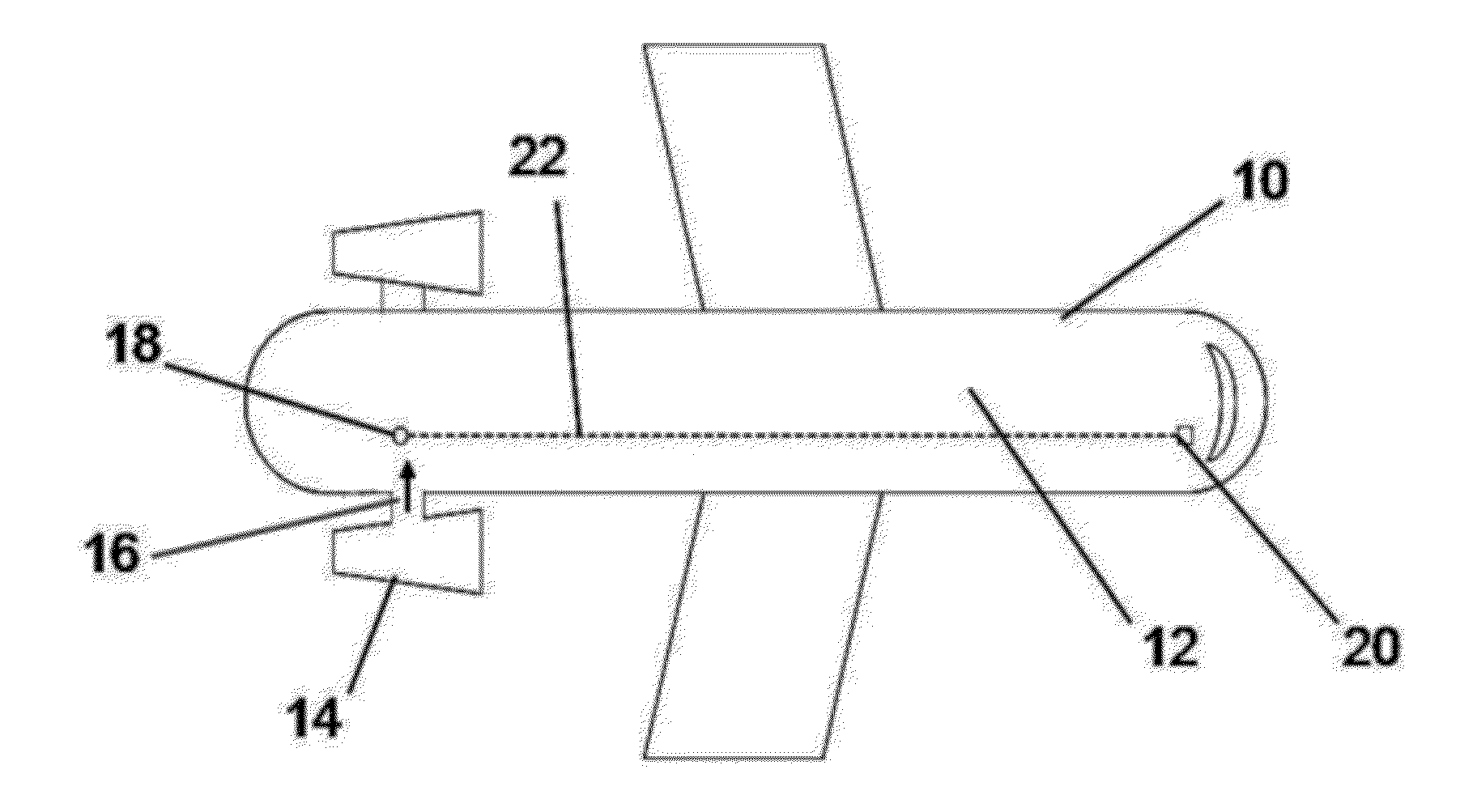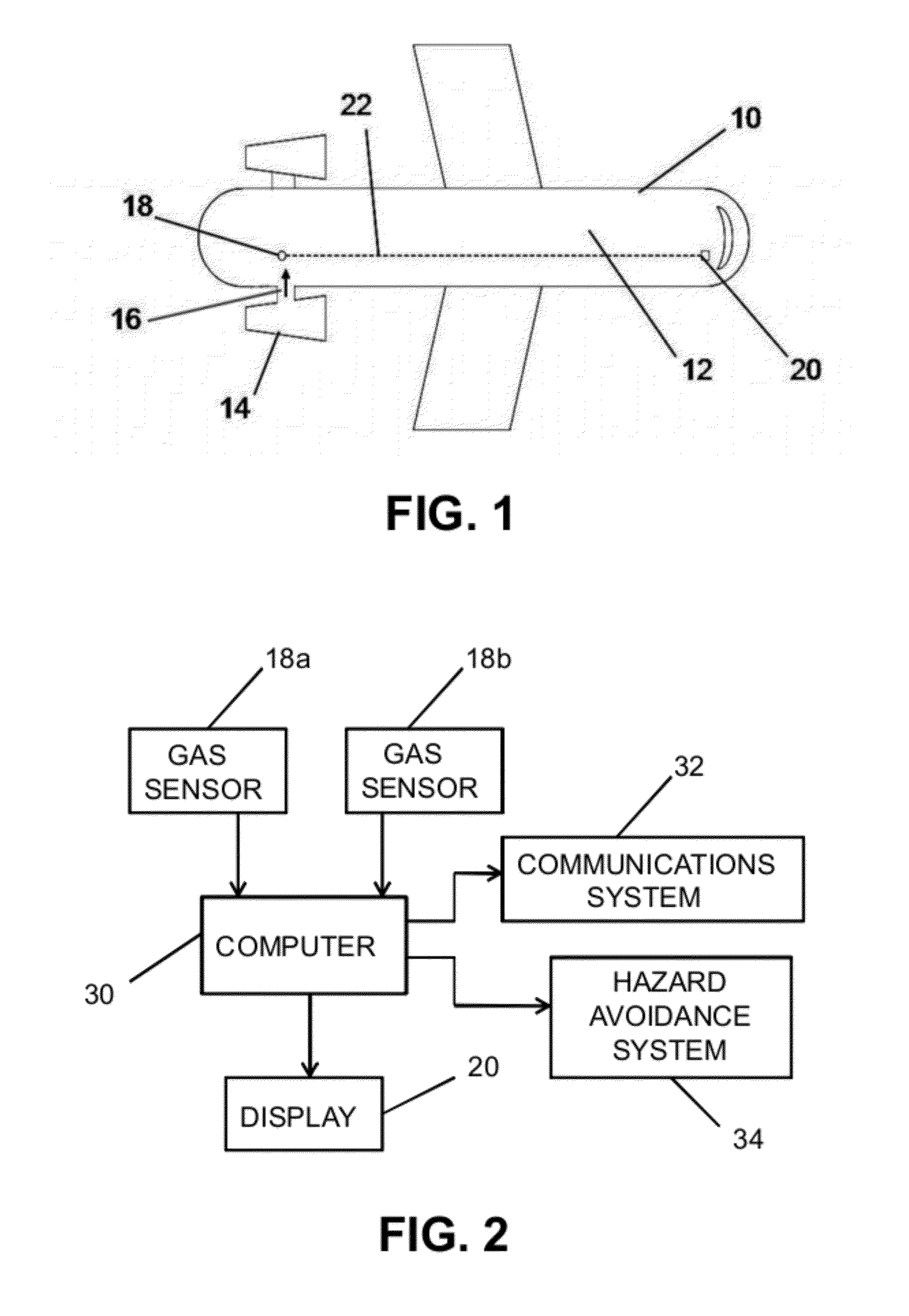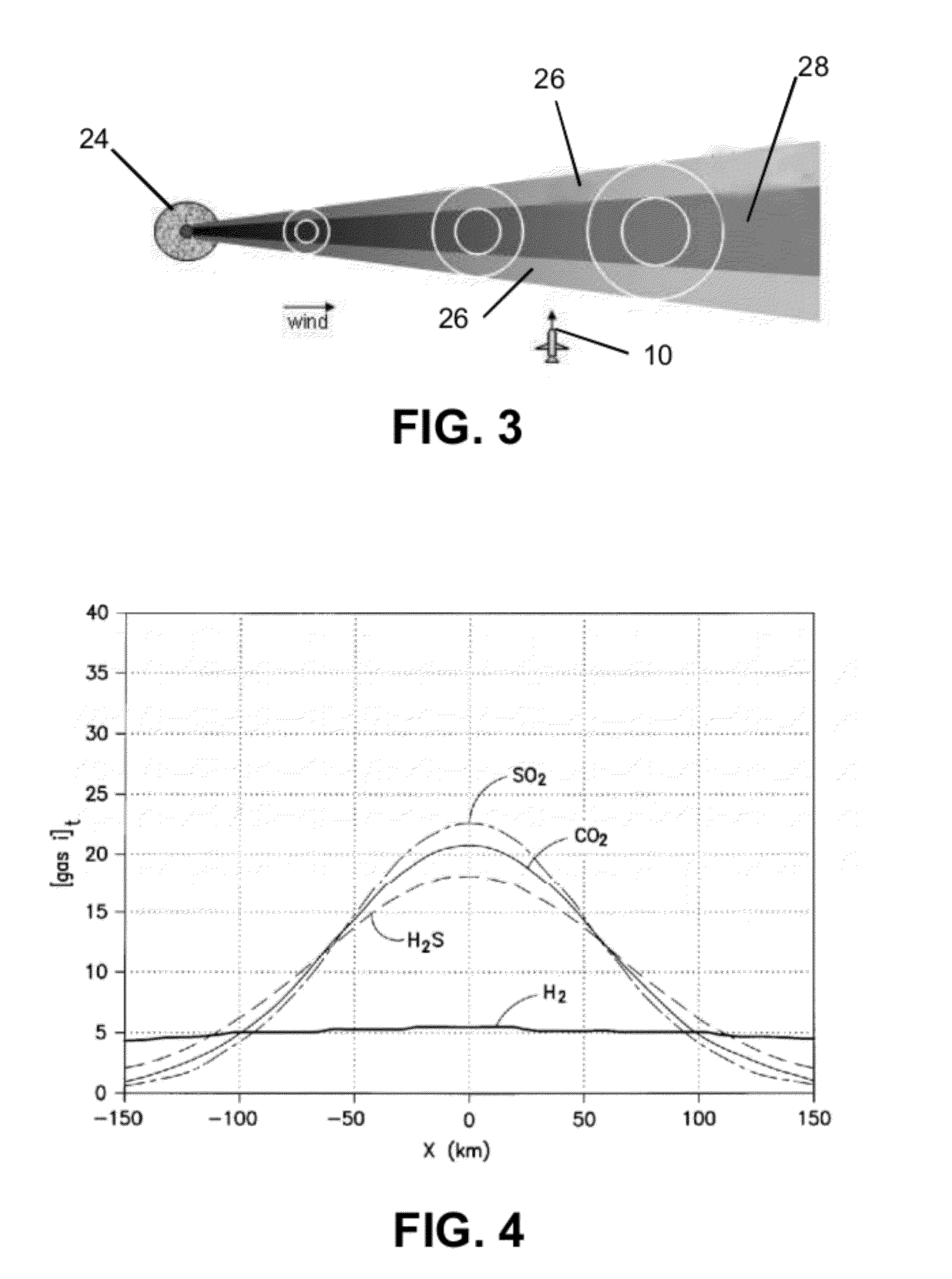Systems and Methods for Early Detection of Aircraft Approach to Volcanic Plume
a technology of aircraft approach and plume, applied in the field of systems and methods for sensing when, can solve problems such as damage to electronics and machinery, hazard to flying jet aircraft, and threat to people's health and livestock
- Summary
- Abstract
- Description
- Claims
- Application Information
AI Technical Summary
Benefits of technology
Problems solved by technology
Method used
Image
Examples
Embodiment Construction
[0022]Various embodiments of a detection system that measures the concentrations of one or more volcanic gases onboard an airplane will now be disclosed. The detection method generally comprises the steps of measuring the concentration of one or more volcanic gases in air circulating in a space inside an aircraft and generating an alarm when one or more measured volcanic gas concentrations exceed a respective user-specified threshold or when a pattern of volcanic gas concentration is recognized with a user-specified confidence level. These systems are configured so that the alarm indicates the proximity of dangerous levels of either a volcanic gas or of volcanic ash. In particular, the detection system utilizes the air circulating through an aircraft cabin or cockpit to enable use of low-cost, carry-on electronic devices that can be deployed and used by aircraft operators without FAA certification.
[0023]The detection systems disclosed herein comprise one or more electronic sensors t...
PUM
 Login to View More
Login to View More Abstract
Description
Claims
Application Information
 Login to View More
Login to View More - R&D
- Intellectual Property
- Life Sciences
- Materials
- Tech Scout
- Unparalleled Data Quality
- Higher Quality Content
- 60% Fewer Hallucinations
Browse by: Latest US Patents, China's latest patents, Technical Efficacy Thesaurus, Application Domain, Technology Topic, Popular Technical Reports.
© 2025 PatSnap. All rights reserved.Legal|Privacy policy|Modern Slavery Act Transparency Statement|Sitemap|About US| Contact US: help@patsnap.com



